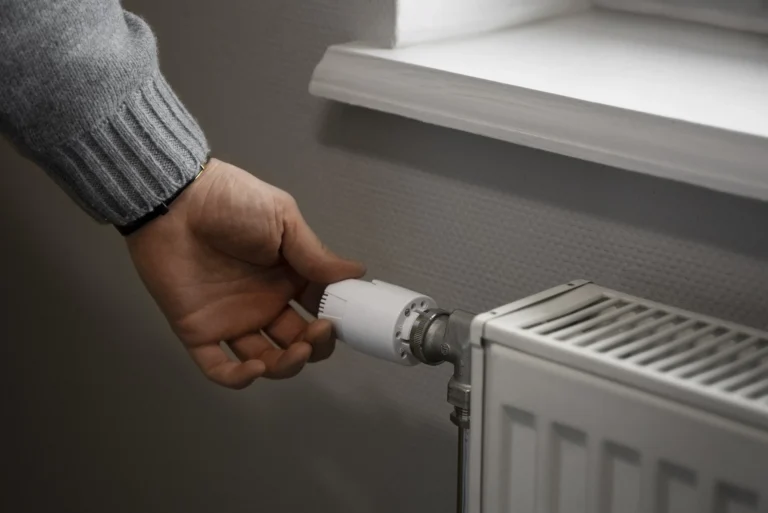What Is the Standard Assessment Procedure for the ECO4 Scheme?
You’ve probably heard the term “SAP” thrown around if you’ve been looking into free boiler grants or ECO4 funding. But what does it actually mean?
In simple terms, SAP… or Standard Assessment Procedure, is how the government measures how energy efficient your home is. It plays a big role in deciding whether you qualify for energy-saving upgrades like a free boiler, heat pump, or insulation under the ECO4 scheme.
If your home is hard to heat or your energy bills are always sky-high, this guide will show you how SAP works and why it matters more than you might think.
Why Does the ECO4 Scheme Use SAP?
ECO4 is the latest version of the Energy Company Obligation. It’s designed to help low-income and vulnerable households improve their homes and lower their energy bills.
But with so many homes across the UK, how do you decide which ones need help first?
That’s where SAP comes in. It’s like a full energy check-up for your home. It looks at how much energy your property uses to stay warm, how much it costs to heat, and how much carbon it produces.
The results from your SAP assessment help with a few key things:
- Proving your home qualifies for help
- Choosing which upgrades will have the biggest impact
- Showing the improvement once the work is done
So if your home feels cold, your bills are painful, and you think you could qualify for help, SAP is the key to unlocking those benefits.
What Is the Standard Assessment Procedure?
The Standard Assessment Procedure is the UK’s official way of measuring how energy efficient your home is.
It’s used by energy assessors to work out how your home performs. That includes things like:
- How much heat does it lose
- How much energy does it need to stay warm
- How much does it cost to run
Once the data is collected, it’s turned into a score — your SAP rating. That score then feeds into your EPC rating, which runs from A (the best) to G (the worst).
Here’s how the scores match up:
| EPC Band | SAP Score Range |
| A | 92–100+ |
| B | 81–91 |
| C | 69–80 |
| D | 55–68 |
| E | 39–54 |
| F | 21–38 |
| G | 1–20 |
If your home falls into band D or below, you could be eligible for help under ECO4.
How Is the SAP Rating Calculated?
A trained assessor will visit your home and gather all the information needed to understand its energy use. They’ll look at:
- The size of your home
- What insulation do you have
- The type of heating system installed
- Windows, walls, floors, and roof materials
- How well your home holds in heat
They then plug this into specialist SAP software. It calculates your home’s energy use, heating demand, CO₂ emissions and fuel costs.
The result is your SAP score and the basis for your EPC rating. This is what helps determine whether you’re eligible for an ECO4 grant.
Not sure where your home stands? Check your eligibility with Heatcore and get a free SAP assessment if you qualify.
Why Does SAP Matter Under ECO4?
1. It proves your home needs help
A low SAP score means your home loses heat quickly and costs more to keep warm. That’s a red flag under ECO4 and often enough to qualify for free upgrades.
2. It chooses the right improvements
Should you get a new boiler, insulation, or a heat pump? SAP helps answer that. The system shows which changes will make the biggest difference in lowering your bills and cutting carbon.
3. It shows your home has improved
After upgrades are installed, your home is assessed again. That second SAP score shows how much better your home performs and proves the ECO4 grant worked.
How SAP and EPC Ratings Work Together
SAP and EPC go hand in hand. The SAP score gives the numbers, and the EPC puts it in an easy-to-read format with a rating from A to G.
Here’s a reminder of how they match up:
| EPC Band | SAP Score Range |
| A | 92–100+ |
| B | 81–91 |
| C | 69–80 |
| D | 55–68 |
| E | 39–54 |
| F | 21–38 |
| G | 1–20 |
Most people applying for ECO4 help fall into bands D, E, F, or G. That’s where the biggest savings can be made.
Why are you waiting? Apply now before slots run out!
Standard Assessment Procedure Training: Who Can Carry Out SAP Assessments?
Only trained and accredited assessors can carry out SAP assessments. If you’re a professional looking to do this kind of work, you’ll need to complete official training with a body like Elmhurst Energy or Stroma Certification.
You’ll learn how to:
- Use SAP software
- Conduct property surveys
- Understand how ECO4 grants work
For homeowners, though, you don’t need to worry. If you qualify for an ECO4 grant, Heatcore will arrange everything, including a fully trained assessor.
Thinking of applying for a grant? We’ll guide you through the SAP process from start to finish. Contact Heatcore today to speak with a grant specialist.
What Happens During a SAP Assessment?
Not sure what to expect during a SAP assessment? Here’s how the process works:
- A quick survey – An expert visits your home and checks insulation, layout, and heating systems.
- Your data is analysed – It’s entered into official SAP software.
- You get a score – The system gives you a SAP rating and an EPC certificate.
- Grants are matched to your home – Your score is used to see what ECO4 help you can get.
- After the work, it’s checked again – A second SAP shows how much your home has improved.
It’s simple, quick, and you won’t need to lift a finger if you go through a provider like Heatcore.
Want the technical breakdown? You can read the official UK Government guidance on the Standard Assessment Procedure.
SAP Updates: What’s Changed for ECO4?
SAP is updated regularly to keep up with changes in homes, heating systems, and energy use. The latest version — SAP 10.2 — includes:
- Updated fuel costs
- Better modelling for modern tech (like heat pumps and solar)
- More accurate carbon data
ECO4 now uses SAP 10.2 for all assessments. That means newer, greener homes get the right recognition, and older homes are prioritised for support.
The Benefits of SAP Under the ECO4 Scheme
Let’s quickly sum up why SAP matters so much under ECO4:
- ✅ It shows which homes are wasting energy
- ✅ It helps target support to those who need it
- ✅ It helps choose the best upgrades
- ✅ It proves improvements are working
- ✅ It helps households cut bills and carbon emissions
Whether you’re freezing in winter or just want to future-proof your home, SAP makes sure any help you get is fair, efficient and based on real data.
Related Blog: EPC Guide 2025
Want to understand your EPC rating? Check out our detailed blog on EPC Guide 2025.
Conclusion: Why SAP Is Crucial for ECO4 Success
SAP might sound technical, but it’s one of the most important steps in getting help through ECO4.
It spots the homes that need help most. It shows what’s worth fixing. And it proves that upgrades actually work.
If you’re ready to lower your bills and warm up your home, a SAP assessment is where it all begins.
Ready to upgrade your home for free under ECO4? Apply now with Heatcore; it only takes a few minutes to start.




